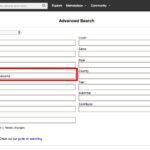The B minor 7th chord (Bm7) adds a sophisticated and slightly melancholic flavor to your guitar playing. It’s a versatile chord that you’ll find across genres, from smooth jazz to pop and rock. Building upon the foundation of a B minor chord, the added 7th interval gives it a unique character, making it more intriguing than its minor counterpart.
In this comprehensive guide, we’ll break down the Bm7 chord, exploring its construction, and providing you with two essential ways to play it on your guitar. Whether you’re just starting your chord journey or looking to enrich your chord vocabulary, understanding the Bm7 is a valuable step. Let’s dive in and discover the nuances of the Bm7 chord!
Understanding the Bm7 Chord: Construction and Theory
Before we get our fingers on the fretboard, let’s understand what makes a Bm7 chord. Like all 7th chords, the Bm7 is built upon a triad with an added note – in this case, the minor 7th.
The Bm7 chord is composed of these four notes:
- Root: B
- Minor Third: D
- Perfect Fifth: F#
- Minor Seventh: A
To understand this further, consider the intervals from the root (B):
- The minor third above B is D.
- The perfect fifth above B is F#.
- The minor seventh above B is A.
Combining these intervals gives the characteristic sound of the Bm7. Compared to a standard B minor chord (B, D, F#), the addition of the minor 7th (A) is what creates the richer, more complex tonality of the Bm7. This theoretical understanding will not only deepen your knowledge but also help you appreciate the sound you are creating.
Bm7 Chord Formula
The formula for a minor 7th chord is: Root, Minor 3rd, Perfect 5th, Minor 7th. This formula applies to all minor 7th chords, not just Bm7. Knowing this pattern allows you to construct other minor 7th chords as well.
Playing the Bm7 Chord: Two Essential Positions
Now, let’s put theory into practice and learn how to play the Bm7 chord on your guitar. We’ll cover two popular and useful positions: an open position voicing and a 2nd position barre chord.
Bm7 Chord in Open Position (Version 1)
The open position Bm7 is a great starting point. “Open position” means we utilize open strings in the chord, which adds resonance and a unique tonal quality. This version is played in standard tuning and is excellent for songs that require a lighter, more airy sound.
To play the open position Bm7 chord:
- Index finger: 2nd fret of the A string (5th string)
- Middle finger: 2nd fret of the G string (3rd string)
- Ring finger: 2nd fret of the high E string (1st string)
[Image of open position Bm7 chord]
Strum down five strings from the A string (5th string), avoiding the low E string (6th string). The challenge with this voicing is ensuring the open D (4th) and B (2nd) strings ring clearly. Focus on fretting the notes cleanly with the tips of your fingers, avoiding any accidental muting of adjacent strings. Practice slowly at first to achieve a crisp, clear sound.
Bm7 Chord in 2nd Position (Barre Chord – Version 2)
The 2nd position Bm7 is a movable barre chord shape. This means you can move this same hand shape up and down the neck to play other minor 7th chords. This voicing is useful when you need a fuller sound and when transitioning between chords higher up the neck. In the “2nd position,” the lowest note of the chord is on the 2nd fret.
To play the 2nd position Bm7 chord:
- Barre with your Index finger: Across the 2nd fret of the A (5th), G (3rd), and high E (1st) strings. Ensure all these strings ring clearly.
- Middle finger: 3rd fret of the B string (2nd string)
- Ring finger: 4th fret of the D string (4th string)
[Image of 2nd position Bm7 chord]
Strum five strings down from the A string (5th string), again omitting the low E string. Barre chords can be tricky initially, so focus on applying even pressure with your index finger across all the strings. Start by practicing just the barre to get a clean sound before adding the other fingers.
Songs Featuring the Bm7 Chord
The Bm7 chord, with its distinctive character, appears in a wide range of musical styles. Let’s explore a couple of examples to hear the Bm7 in context and inspire your playing.
One classic example is “Frosty the Snowman.” This festive tune, popularized by Gene Autry, uses the Bm7 chord in its bridge. Listen to how the Bm7 adds a touch of warmth and cheerfulness to this holiday favorite. The jangly nature of the chord fits perfectly within the song’s lighthearted feel.
For a more contemporary example, check out “Chrissie Hynde” by Butch Walker. This song, a tribute to The Pretenders’ iconic lead singer, features the open position Bm7 chord in its chorus. Walker masterfully uses the Bm7 to evoke a sense of nostalgia and longing, demonstrating the chord’s emotional depth beyond just a “cheery” sound. This song highlights the versatility of the Bm7 chord in modern songwriting.
Exploring songs that use the Bm7 chord is a fantastic way to train your ear and understand how to apply it musically. Platforms like Fender Play offer song lessons and chord charts, making it easier to learn songs and see chords like Bm7 in action.
Incorporating the Bm7 Chord into Your Playing
Mastering the Bm7 chord opens up new musical possibilities. Here are a few tips to help you integrate it into your guitar playing:
- Practice Transitions: Practice switching between the Bm7 chord and other common chords like E minor, A major, or D major. Smooth transitions are key to musicality.
- Experiment with Voicings: Once comfortable with the two positions, explore other voicings of the Bm7 chord. Different voicings can create subtle yet effective variations in tone.
- Chord Progressions: Try creating your own chord progressions using the Bm7. Experiment with different chord combinations to discover unique sounds and musical ideas.
- Listen and Learn: Actively listen for the Bm7 chord in songs you enjoy. Pay attention to how it’s used and try to incorporate similar techniques into your own playing.
Conclusion
The Bm7 chord is more than just another chord to learn; it’s a gateway to a richer and more expressive guitar vocabulary. By understanding its construction, mastering different positions, and exploring its use in songs, you’ll unlock a new dimension in your playing. So, take your time, practice diligently, and enjoy the journey of incorporating the Bm7 chord into your musical repertoire. Ready to explore more chords and songs? Start your free trial with Fender Play and continue your guitar learning journey today!


